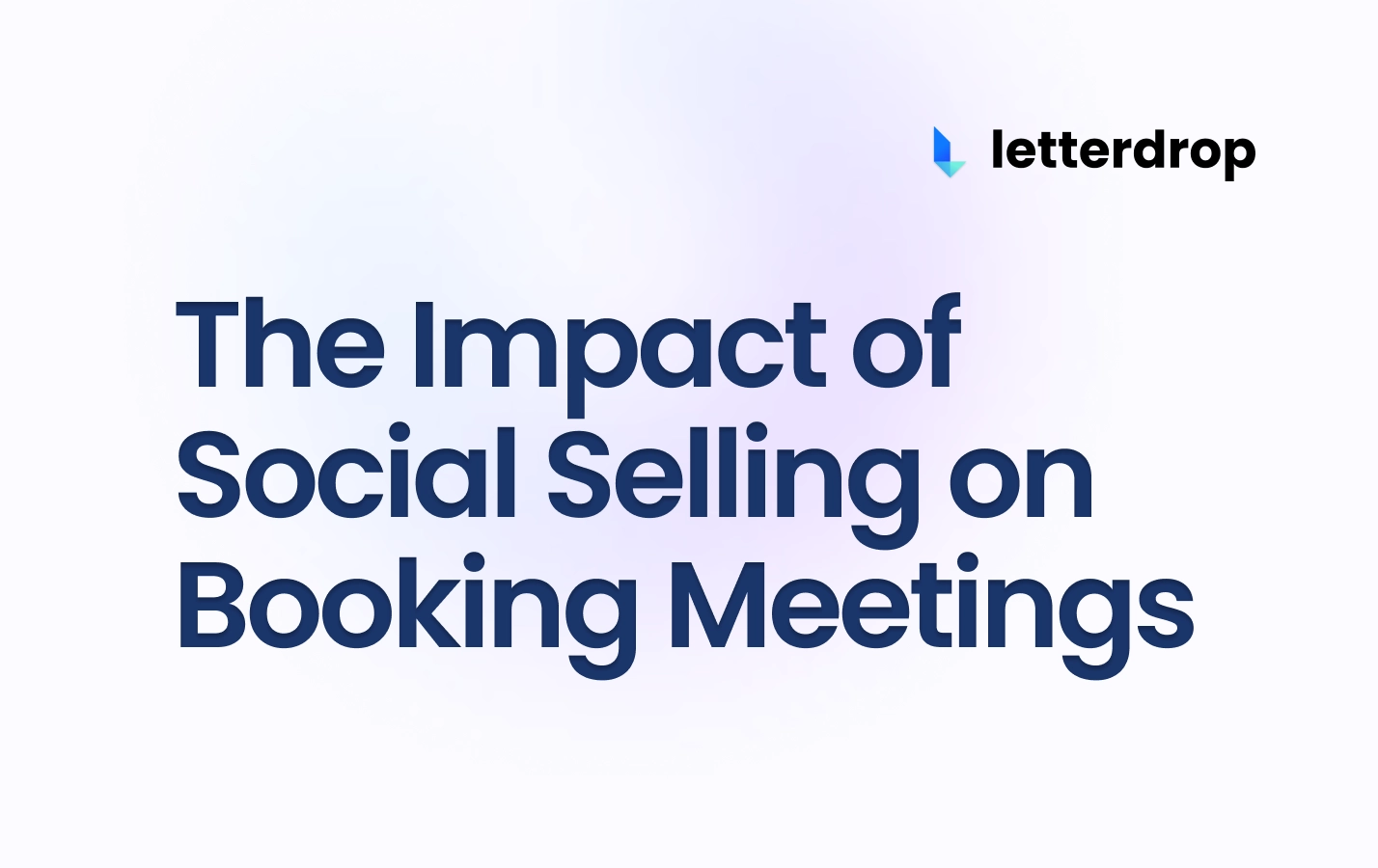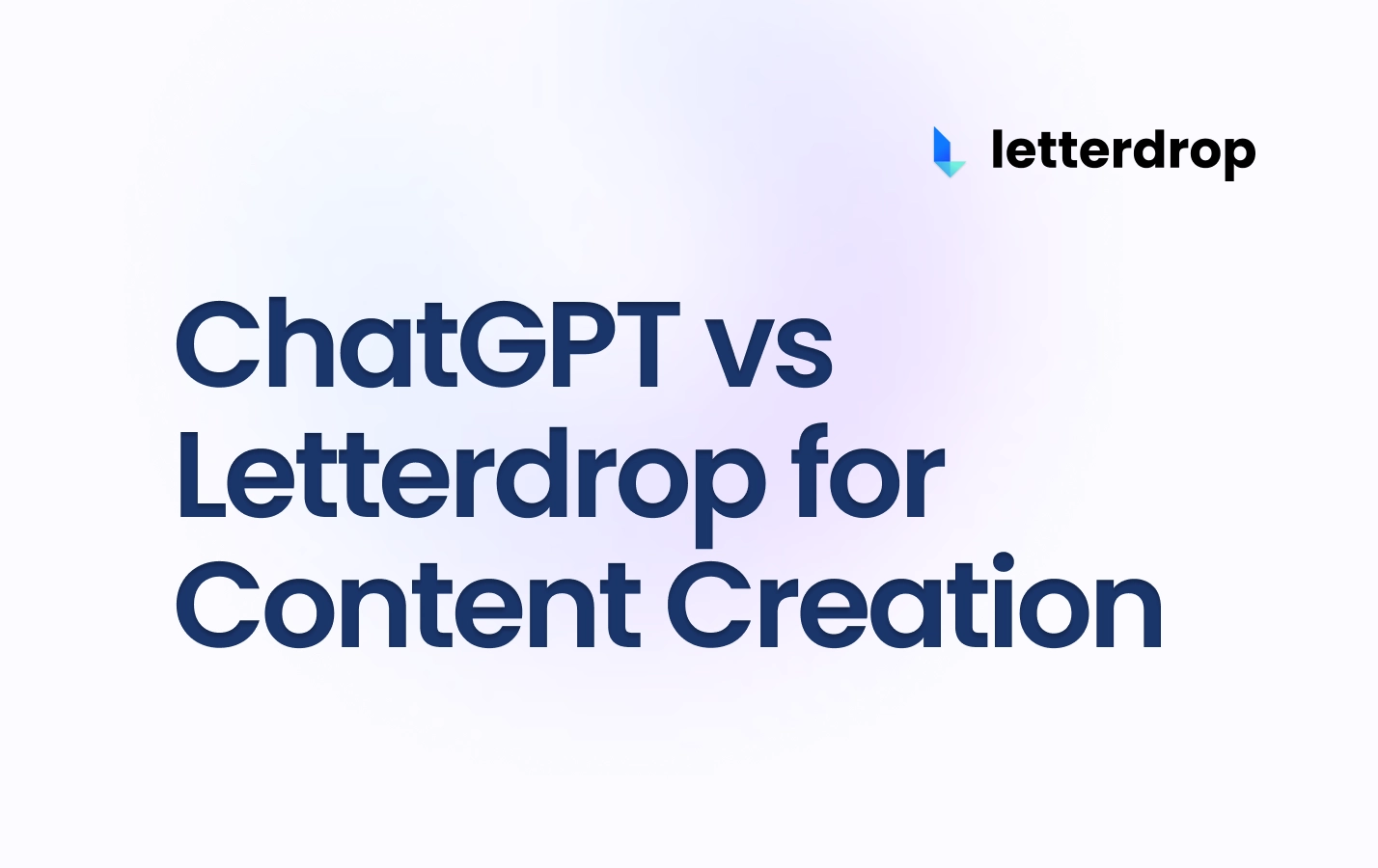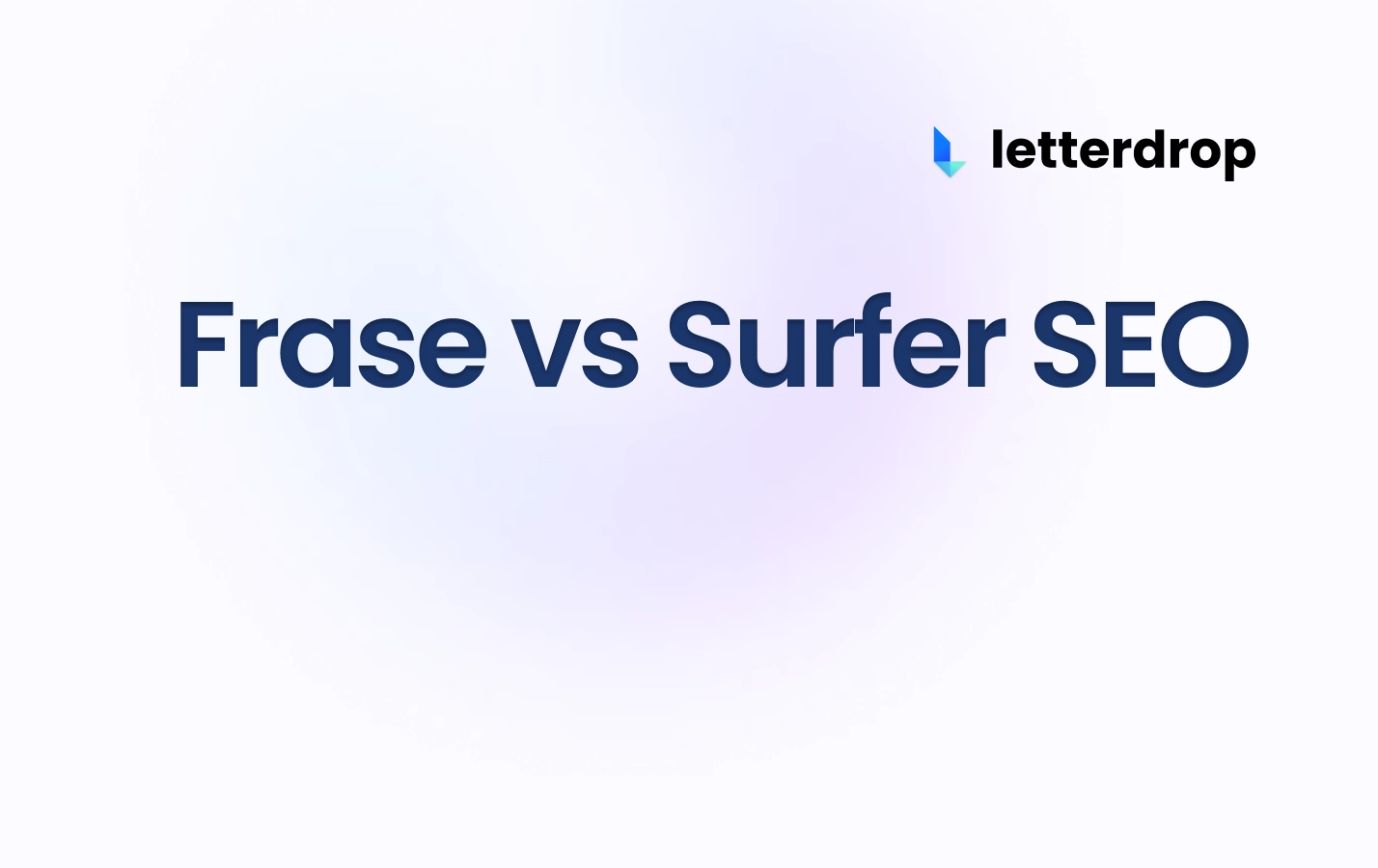Top 8 Blog Post Templates to Fuel Your Writing Process
Did you know that 84% of businesses have a content market strategy as of 2021? Surveys indicate that blog posts are one of the most effective forms of marketing content. If you’re a business owner or marketer who wants to make your blog posts stand out, this article is for you.
Staring at a blank editor and starting from scratch not only makes writing challenging but is straight-up inefficient. You want to get a point across. Millions of blogs have been written already. Other marketers have figured out how to best format and convey content depending on your goals. Don't reinvent the wheel. Start with a template instead.
Blog post templates allow writers to follow a specific structure. Say goodbye to writer’s block and improve the quality of your writing. We show you 8 top-performing blog post templates in this article, which uses the listicle template format - very meta, we know! Instead of spending hours doing research on finding what format works best for the topic at hand, you can simply pick one of our templates and get writing.
#1 Listicle: X Ways to do Y in a Week
This is the listicle template where you list out 3-20 bite-sized tips, strategies, techniques, tools in list form. They are search engine friendly and tend to get clicked on a lot due to the simple way in which they convey information - great for skimming. Each item speaks to a clear benefit or is value-additive in some way. Wrap up with a conclusion that pushes the reader to a specific call to action.
The Title should contain:
- The number of items in the list X.
- A specific benefit Y.
- A time frame
Examples:
- 10 ways to improve your email open rate today.
- 15 products to try to get better hair in 3 months.
- 5 methods to hire the best engineers in a week
The Intro should explain the problem and talk about how reading the rest of the article can help them solve the problem.
The List should be numbered and each item should be in an H2 subheading. They should be a few words long. Just enough to give an overview and the benefit of following the item.
Examples of good list items:
- Build tricep mass with weighted dips.
- Ask for names of other stakeholders in a sales call to close the deal.
- Save thousands of dollars by applying for a tax write off
In the actual body of each list item, explain how to execute what you told them to do in a few lines.
The Conclusion should have a clear call to action to buy your product or service - whether that means signing up for a free version, trial, scheduling a demo, booking a time on your calendar, etc.
# 2 Case Study: How X Did Y in 30 days
This is the case study template where you show an example of how someone achieved a result successfully. The goal is to inspire a reader with the same problem to take the same steps and achieve results themselves.
The format is an introduction, a section on the featured participant, a section on the result they achieved, a section with details on how they did it in detail, and finally, wrap up with a conclusion that pushes to the call to action.
The Title should contain:
- The person or company featured in the case study X.
- The result they achieved Y, quantified with a number.
- A time frame
Examples:
- How Acme cut its customer support response time from 12 hrs to 4 hrs for their enterprise customers in a month.
- Customer Feature: How Monica from PiedPiper grew revenue 80% through content marketing in 2020.
- Learn how 42-year-old Ben Lee got to 12% body fat in 6 months
The Intro should tell the reader who you're going to talk about, the result they achieved, and how you can do it too. If the result sounds daunting, make it relatable. A company may want to grow revenue by 100% next year but that might seem impossible. Show them that your featured customer was also in their shoes.
The Featured Participant section should introduce them and make them relatable.
The Results section explains the final results your participant achieved in detail.
The How they did it section explains the steps the participant took to achieve the outcome they did and how your reader can do it too. This section has to be very detailed and is the meat of your post. This is what your readers opened the post for.
The Conclusion should summarize the above, motivate your reader to achieve similar results, and have a clear call to action to buy your product or service - whether that means signing up for a free version, trial, scheduling a demo, booking a time on your calendar, etc.
# 3 Comparison: X vs Y or Alternative to X
This is the "alternative to" or "X vs Y" template where you pit two products (of which one is yours) against each other. This is a common search query when buyers are researching a purchase decision. Readers love it because it's educational, saves them from doing tedious research on their own, and helps them pick the best product for their needs. If one of the products is yours, it's best to get a third party to write this piece to prevent it from appearing biased.
The Title can contain:
- Name the products you're comparing
- The category that both products belong to
- Who is this guide for?
Examples:
- Letterdrop vs Mailchimp: The best newsletter platform for content marketing
- Bootstrapped vs Venture-backed businesses. What should you start?
- Adobe Premiere Pro vs Kapwing vs Final Cut Pro. Which video editor do you need for your YouTube Channel?
The Intro should mention the names of the products or services you are comparing and a short description. List the features or metrics you're going to use to evaluate them. Finally, encourage the reader to read till the end. Mention any disclaimers here if you have an affiliation with any of the products.
Next, you have a Product Overview section where you explain why you are an authority to be reviewing these products. Establish the work you did, methodology, and background to make the reader trust your opinion. Add more details on the products themselves.
In the Feature-By-Feature section, you list the feature and then compare the products you're evaluating. Do this for each feature you mentioned in the introduction. Go from highest priority to lowest priority features.
The Conclusion is the most crucial aspect of the comparison template. This is where you share your verdict. You can recommend different products for different personas. For example, maybe a business on a budget might choose one product, but a company that wants the very best should pay more for another.
# 4 Step-by-Step Guide: How to Complete X Task
In the step-by-step guide template, you list out and explain a series of steps to help a reader achieve a goal. This template is ideal for instructional or educational posts where the task at hand is typically completed in chronological order.
The Title can contain:
- The task X at hand.
- A specified number of steps to complete the task.
- Benefits of completing the task.
- How they can complete the task even if there is a common obstruction
Examples:
- 10 steps to draft a blog post in 45 mins or less.
- How to write a newsletter that sells in 12 easy steps.
- How to start a YouTube channel without professional camera equipment.
The Intro is where you show the reader the following:
Problem: Explain the problem to the reader
Solution: Present the solution briefly
Proof: Establish authority by demonstrating your experience solving the problem so that the reader trusts you
The Steps should be numbered and in H2 section headers. You can break each step into short paragraphs explaining the step. Begin each step with a present tense verb to make it action-oriented.
Example of a how-to guide: How to Write a High-Performing Blog Post With Content Outlines
Step #1: Keyword Analysis
Step #2: Research the Topic and Collect Data
Step#3: Define Your Target Audience
Step #4 Start With the Title to Focus the Piece
Step #5 Write Down the Section Headers
Step #6 List Out the Takeaways as Bullet Points
Step #7 Review your content outline with your team before writing
The Conclusion must contain a short summary of what you’ve explained in the body of your article with a call to action that encourages your readers to buy your product and/or service.
# 5 The Beginner’s Guide to X
The beginner’s guide template is a comprehensive introduction to a topic. Readers, typically newbies, will get everything they need to know about the topic without feeling overwhelmed. Beginner guides often make good content pillars and can be the cornerstone content for a lot of long-tail pieces.
The Title should contain:
- The term ‘beginner’s guide’ or ‘for beginners’.
- A specific topic X that the guide is about
Examples:
- TikTok marketing for beginners.
- A beginner’s guide to Sous Vide cooking.
- Taxes for small businesses - The beginner’s guide.
The Intro should be encouraging, promising results to anyone reading the guide regardless of experience levels. Make sure to use simple language. Avoid jargon since you’re addressing beginners. Tell them what they'll learn.
In the body, we recommend:
- Introducing the topic.
- Defining key terms.
- Answering common questions a person new to the topic might ask, answering progressively more nuanced questions.
- Linking to other pieces of content with more in-depth answers.
The Conclusion is a chance to encourage your reader to continue learning with links to other helpful resources. You can also include a clear call to action that encourages readers to buy your product or service that helps beginners.
# 6 The Expanded Definition: What is X? A Deep Dive
This template provides a comprehensive explanation of a specific subject. This format is ideal for blog posts where readers find it difficult to follow a certain topic without being introduced to its inner workings, its history, or a breakdown of its definition. This is different from the beginner guide in the sense that it goes deep on a specific subtopic instead of covering a broad topic at a high level.
The Title should contain:
- A concept/acronym X that needs to be explained.
- The expanded version of an acronym if applicable.
- An introduction to the topic in no more than a few words
Examples:
- What is SEO? Search Engine Optimization explained.
- What are content pillars? Everything you need to know.
- What is Idempotency in software and when do you need it?
The Intro must consist of the definition of a specific concept that you will address in the course of the blog post. Ensure that the definition is followed by a brief explanation of it so that readers know what you’re talking about.
The body of the article can consist of the benefits of applying a specific concept or in the case of an acronym, an explanation of its use cases. This can be followed by a set of common questions as H2 sub-topics that readers will want to know about topic X.
Example of an expanded definition subtopics from our article, Everything You Need to Know About Content Pillars.
- What is a Content Pillar?
- What Does a Content Pillar Look Like?
- Why Your Business Needs a Content Pillar.
- How to Implement a Content Pillar.
- Conclusion.
The Conclusion must contain a short summary of what you’ve explained in the body of your article with a call to action that encourages your readers to buy your product and/or service.
# 7 How They Did X in Y Concept
This is the case study template where you show an example of how someone achieved a result successfully. The goal is to inspire a reader with the same problem to take the same steps and achieve results themselves. The format is an introduction, a section on the featured participants, a section on the results they achieved, a section with details on how they did it in detail, and finally, wrap up with a conclusion that pushes to the call to action.
The Title should contain:
- The people or companies featured in the case study X.
- The result they achieved Y, quantified with a number.
- A time frame
Examples:
- 6 Olympic Athletes Share Their Wellness Rituals To Perform Under Stress.
- What These 12 Fast-Growing Startups Can Teach You About Email Marketing.
- 10 of Silicon Valley's Most Successful Sales Leaders Reveal How They Built a $10M Book of Business.
The Intro should tell the reader how they can achieve success if they're willing to put in the work. Emphasize how there's a right and wrong way to go about achieving a successful result. Demonstrate how you've picked great examples and have identified the steps they took to succeed.
The Participant's Story section outlines the story of the featured company or person.
The Unique Approach shows exactly what they did that was different from others.
The Why it works section explains the key insight on why the above approach was successful.
The How they do it section explains the steps in detail for the reader to achieve similar results.
The Conclusion should re-iterate the steps and that they are backed by the experience of others. Push your reader to take action. Make a commitment to follow these steps publicly as a comment to your post or on social media perhaps (helps improve your virality).
# 8 The Myth Debunked Post: The X Myth Debunked
The myth-busting template dispels widely facts believed to be true but is actually more nuanced. These are more likely to generate backlinks and social media shares. When you dispel common myths, you drum up controversy. Controversy pushes people that agree and disagree with you to share your content.
The Title can either:
- Focus on a single myth and speak to the X other related myths.
- Highlight X number of myths
Examples:
- 10 myths about medical billing. The truth about health insurance.
- The ‘quantity is better than quality’ myth and 7 other digital marketing myths debunked.
- 5 common things everyone misunderstands about people managers.
The Intro should grab your reader's attention and immediately debunk a myth.
The rest of the body of your article should focus on highlighting each myth, shedding light on how it came to be commonly believed, and finally explaining the truth behind it. Keep your paragraphs brief.
The Conclusion can be a recap of the most shocking myth, with a sentence about how the reader has learned the truth behind it. You can end the post by having a clear call to action to check out your website, buy your product or service.
Wrapping Up
We hope these templates will give you a head start to write your blog post. One of the 8 blog templates above is bound to fit your needs. Once you find something that works, stick to it. Create a process around it. Always start with a template and get the rest of your content marketing team to do the same.
 |
If you want to create and save your own templates or use any of the templates we mentioned above and more in one click, check out Letterdrop.
Subscribe to newsletter
No-BS growth strategies and content marketing tactics in your inbox twice a month.
Related Reading
Some other posts you might find helpful
















